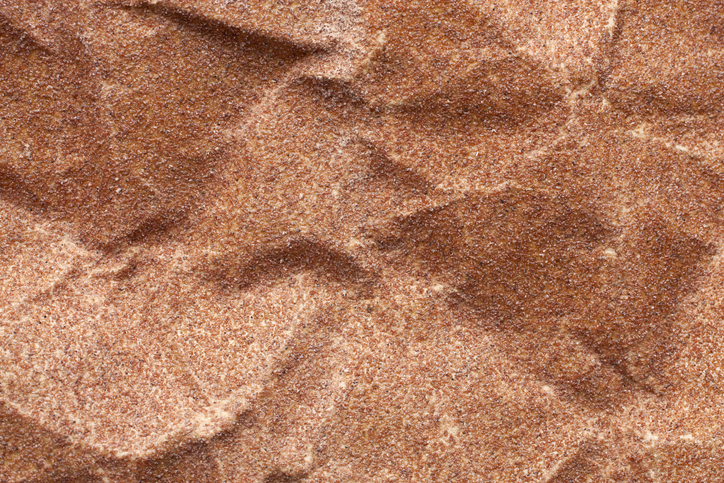Is Skin Care Important for Intermediate Climbers?
Skin care has become an industry all its own. Is it important for all climbers or just the strongest? How do we keep skin strong?

It seems that the best climbers consider skin above all else. Whether they break out the razor blades or sandpaper, they make skin care seem important. The best of the best, however, pull on small grips that require strong, resilient skin. Do lower-level climbers require such assistance?
The conversation generally surrounds the positive and large nature of climbing holds at lower difficulties. Several climbers will relate to the juggy nature of some V7s, while every climber will remember a favourite jug-hauling V0-V2. On holds like these, it can seem as though skin care may not help.
Despite the large size of holds on easier climbs, skin management should feel significant for climbers of any difficulty level. In the same way that climbing chalk helps strong and less-strong climbers move through easier problems and projects, skin care provides dry or sticky solutions to sweaty and slick conditions.
Wet skin makes any boulder problem or route more challenging than it would feel otherwise. Skin management helps climbers build thick, even layers of skin on their fingertips. Depending on the climber, it can also ensure that skin stays drier or even more hydrated depending on the relative dampness of a person’s skin.
People with dry skin will notice that skin care keeps them from splitting. Regardless of difficulty, splitting skin makes it difficult to climb near your limit. Conversely, wet skin is less prone to splitting due to its elasticity but will often wear raw instead. This reduces the number of high-quality burns that a person can complete before they cannot overcome the pain or the potential for wet firing.
With all of that said, climbers could climb through the poor conditions. Some athletes discuss embracing bad conditions, whether internal or external, in the pursuit of a strength goal. While this approach has its value, few people are like Alex Megos and even fewer need to climb in discomfort.
Furthermore, skin care can look like many different techniques. Although it has become popular to buy climbing salves, simply keeping your skin dry and clean can make a large difference.
Clean Skin
This often becomes the most overlooked aspect of skin care. If your skin feels oily or dirty, wash your hands. Grime inhibits skin growth.
Dry Hands
Wear rubber gloves while washing your dishes. Naturally, this applies more to those without a dishwasher. To that effect, monitoring the length of your shower can help improve your skin. Daniel Woods has even showered with rubber gloves on, which certainly helps, but at such an expense that a person wonders whether it’s worth it. Regardless, the concept makes sense. If your fingers become wet try to reduce the saturation time.
Razorblade
It seems a little aggressive, but a thin blade helps pare away the excess skin. When a long session reveals uneven and torn skin, a razor can reduce these layers to a near-uniform surface. If you cut your skin back to the same level, new skin will grow strong and even. A uniform surface generally makes for the stickiest contact patch when climbing.
Sandpaper
Similar to a razorblade, sandpaper aims to file away excess, unused skin. For climbers trying to grow skin quickly, this becomes helpful. It pairs well with salves like Rhino or Joshua Tree. With that said, the most common use of sandpaper comes mid-session. When skin peels from repetitive crimping on an edge, sandpaper can smooth this surface to help reduce the chance of splitting. This technique becomes extremely helpful outside.
Skin Salves
These become most useful between sessions. Recommending one over another becomes difficult as every climber will find their preference. It seems as though Rhino saw several climbers convert from their previous skin balms to their line of products. Regular use of skin balms allows athletes to rely on a certain level of repair each day. This becomes useful for skin farming later down the line.
Tactics
Although climbing for a long time is often fun, it generally makes it difficult grow good skin. When climbing, train with skin in mind. If you are destroying your skin on fibreglass, consider whether this is the sort of boulder you need to be working. Sometimes people project endlessly, this often creates craters in fingertips that take a long time to heal.
Spit
This is a Rhino-specific product that helps climbers with extremely dry skin. Sometimes, skin becomes so dry that it has difficulty latching onto anything. Spit gives dry skin a bit more elasticity without compromising its strength. This product works best for people that find themselves perpetually splitting.
Antihydral
This German-engineered sweat stopper has become popular among boulderers. People question its safety as consistent use causes the skin to split. Still, If you want your skin to stop sweating, nothing works better. Tip Juice has a lower concentration of Methanamine than regular antihydral. Instead of the usual 13%, Tip Juice has 4% providing less risk of splits. It also dries to a lesser degree.


